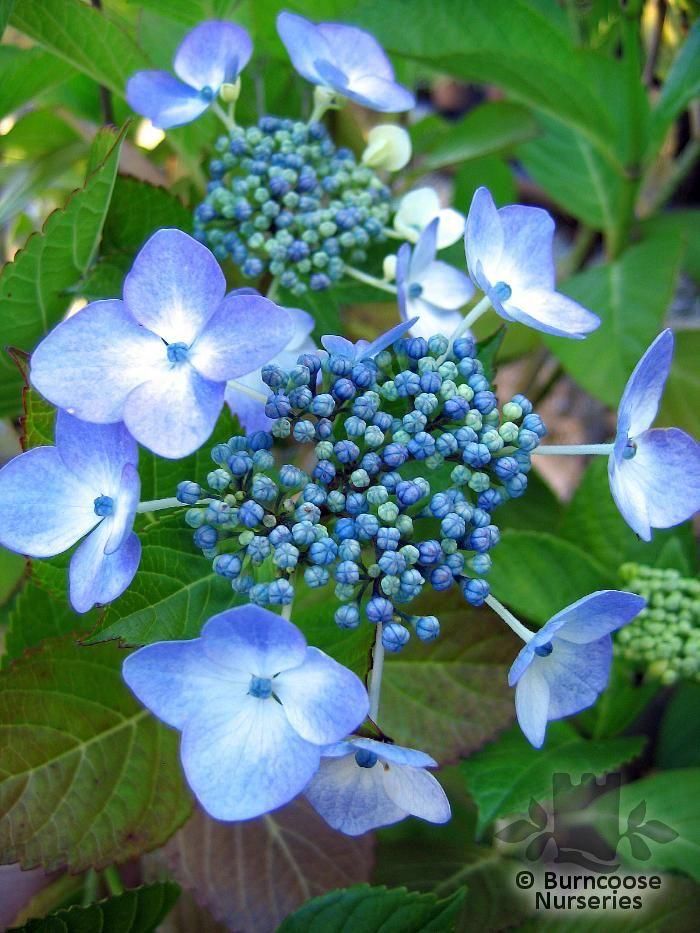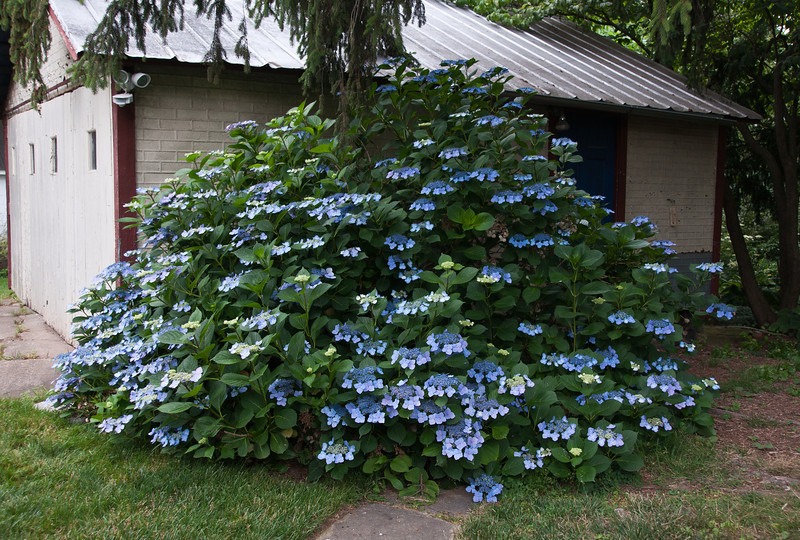Grow Your Own Hydrangea Blue Wave
Grow Your Own Hydrangea Blue Wave
Hydrangea Blue Wave is a beautiful and versatile plant that can add a touch of elegance to any garden. It is a lacecap hydrangea, which means that its flowers are made up of both large, sterile blooms and smaller, fertile blooms. The sterile blooms are typically blue, but they can also be pink or white, depending on the acidity of the soil.
Hydrangea Blue Wave is relatively easy to grow, but there are a few things you need to keep in mind to ensure that it thrives. In this blog post, we will discuss everything you need to know about growing Hydrangea Blue Wave, from choosing the right location to caring for the plant throughout the year.
Choosing the Right Location
Hydrangea Blue Wave prefers full sun or partial shade. If you live in a hot climate, you may want to plant it in a location that gets some afternoon shade. The plant also needs moist, well-drained soil. If your soil is sandy or clayey, you may need to add some compost or peat moss to improve drainage.
Planting Hydrangea Blue Wave
The best time to plant Hydrangea Blue Wave is in the spring or fall. When planting, dig a hole that is twice as wide and deep as the root ball of the plant. Backfill the hole with soil, tamping it down gently to remove any air pockets. Water the plant well after planting.
Caring for Hydrangea Blue Wave
Hydrangea Blue Wave is a relatively low-maintenance plant. However, there are a few things you need to do to keep it healthy and happy. Water the plant regularly, especially during hot, dry weather. Apply a balanced fertilizer once a month during the growing season.
In the fall, prune Hydrangea Blue Wave to remove any dead or diseased branches. You can also prune the plant to shape it. If you want to encourage blue flowers, you can add aluminum sulfate to the soil in the spring.
Overwintering Hydrangea Blue Wave
Hydrangea Blue Wave is hardy in USDA zones 4-9. In colder climates, you may need to protect the plant from winter cold. You can do this by wrapping the plant in burlap or by covering it with a layer of mulch.
Troubleshooting
If your Hydrangea Blue Wave is not thriving, there are a few things you can check. Make sure that the plant is getting enough water. If the leaves are turning yellow, the plant may not be getting enough fertilizer. If the leaves are wilting, the plant may not be getting enough sunlight.
Pests and Diseases
Hydrangea Blue Wave is susceptible to a few pests and diseases, including aphids, spider mites, and powdery mildew. If you see any pests or diseases on your plant, you can treat them with insecticidal soap or neem oil.
Enjoying Your Hydrangea Blue Wave
With proper care, Hydrangea Blue Wave will reward you with beautiful flowers for many years to come. The flowers are a beautiful shade of blue, and they can add a touch of elegance to any garden. You can enjoy the flowers in your yard, or you can cut them and bring them indoors.
Hydrangea blue wave is a beautiful, cascading shrub that is known for its large, blue flowers. It is a relatively easy plant to grow, and it is a popular choice for gardens in both warm and cool climates.
If you are interested in learning more about hydrangea blue wave, I recommend visiting . This website has a wealth of information about the plant, including its history, care requirements, and pest and disease resistance.
In addition to providing detailed information about hydrangea blue wave, also features beautiful photos of the plant in bloom. These photos will give you a good idea of what to expect if you decide to add this plant to your garden.
I hope this information is helpful. If you have any further questions about hydrangea blue wave, please do not hesitate to contact me.
FAQ of hydrangea blue wave
Q: What is Hydrangea Blue Wave?
A: Hydrangea Blue Wave is a type of mophead hydrangea that is known for its blue flowers. It is a relatively easy-care plant that can be grown in USDA hardiness zones 5-9.
Q: How do I get my Hydrangea Blue Wave to bloom blue?
A: The color of Hydrangea Blue Wave flowers is determined by the acidity of the soil. In acidic soil, the flowers will be blue. In alkaline soil, the flowers will be pink or purple. You can make the soil more acidic by adding organic matter, such as peat moss or pine needles.
Q: How tall does Hydrangea Blue Wave grow?
A: Hydrangea Blue Wave can grow to be 4-6 feet tall and 3-4 feet wide.
Q: When does Hydrangea Blue Wave bloom?
A: Hydrangea Blue Wave blooms in the summer, from June to August.
Q: How do I care for Hydrangea Blue Wave?
A: Hydrangea Blue Wave is a relatively easy-care plant. It needs full sun to partial shade and well-drained soil. Water it regularly, especially during the summer months. Fertilize it once a year in the spring with a balanced fertilizer.
Image of hydrangea blue wave
- Image 1: A close-up of a hydrangea blue wave flower, showing the delicate petals and blue color.

- Image 2: A full shrub of hydrangea blue wave, showing the flowers in full bloom.

- Image 3: A hydrangea blue wave in a garden setting, surrounded by other flowers and greenery.

- Image 4: A hydrangea blue wave in a vase, making a beautiful centerpiece for a table.

- Image 5: A hydrangea blue wave in a painting, showing the beauty of the flower in an artistic way.

Post a Comment for "Grow Your Own Hydrangea Blue Wave"